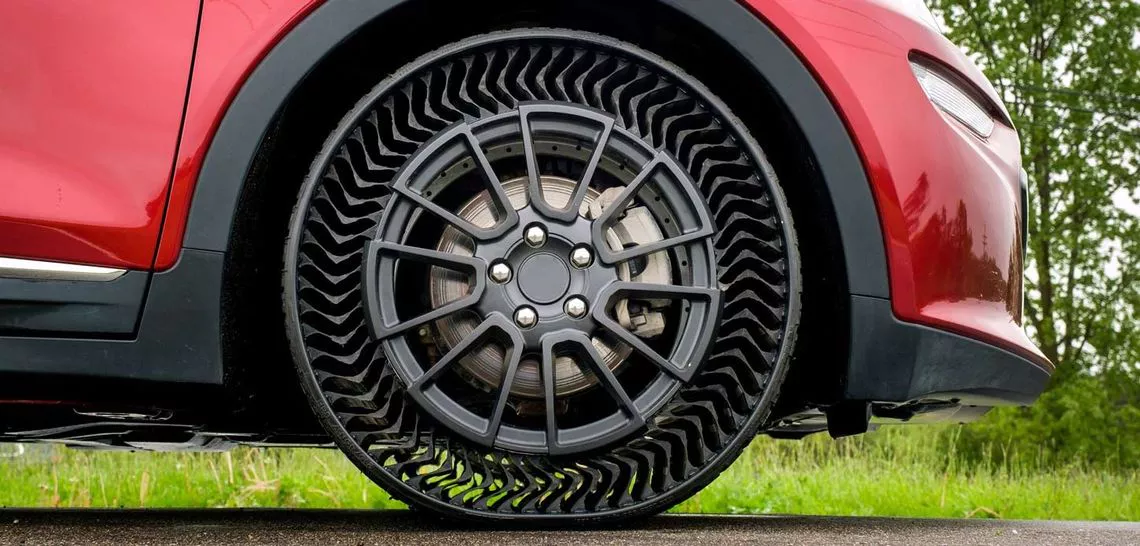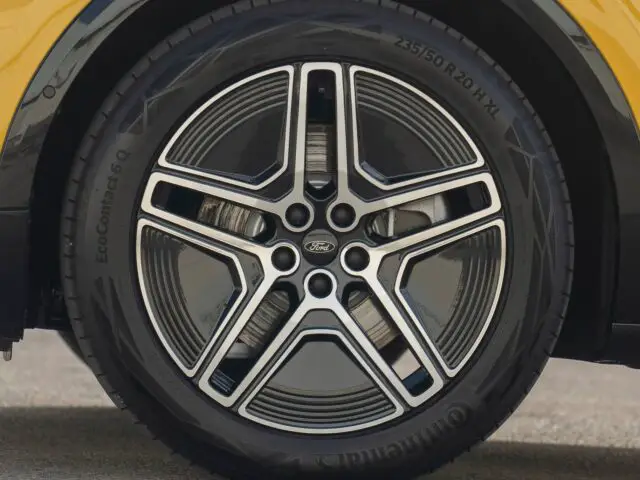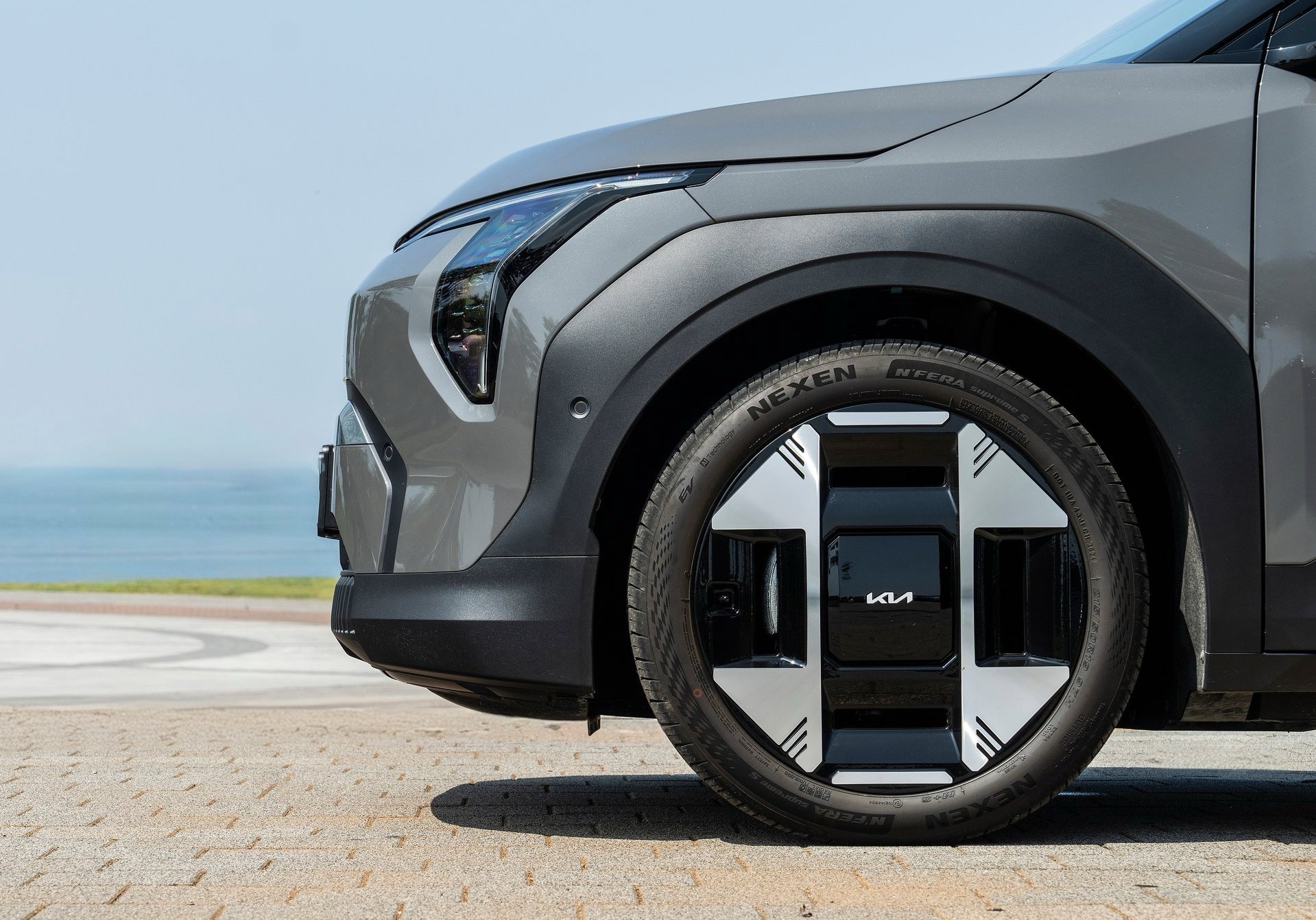What are the latest innovations in tires?
A little history of the automobile tire
The first automobile tires were nothing more than solid rubber rings. In 1845, the pneumatic tire was invented by Robert William Thomson, but this invention did not gain real significance until John Boyd Dunlop developed an improved version for bicycles in 1888. Around 1900, the pneumatic tire was further developed for automobiles. Michelin introduced the radial tire in 1946, which, thanks to its innovative structure, performed better in terms of grip, durability and fuel efficiency.
What is a car tire made of?
A car tire may seem simple, but it is an engineering feat. Each tire consists of different layers and materials that work together to provide grip, comfort and safety. The main components are:
- Tread: this is the outer part of the tire in contact with the road. The tread determines grip on different types of surfaces and water drainage during rain.
- Carcass: the inner structure of the tire consists of layers of textile or steel, also called the carcass. This gives the tire strength and shape.
- Cheeks: the sides of the tire provide flexibility and protect the casing from damage.
- Belt layers: beneath the tread are steel belt layers that provide stability, grip and abrasion resistance.
- Inner lining: this layer prevents air from escaping, allowing the tire to maintain its tension.
Car tire materials
In addition, a car tire consists of a mix of materials, each of which plays a specific role in the tire’s performance, safety and durability.
1. Rubber
Rubber is the main component of a car tire and can be either natural or synthetic:
- Natural rubber: Derived from the latex of the rubber tree. It provides flexibility and grip.
- Synthetic rubber: Is produced from petroleum and offers specific properties such as abrasion resistance and temperature resistance.
2. Soot and silica
- Soot (carbon black): Is added to increase the strength and abrasion resistance of the tire. It also makes the rubber less sensitive to UV radiation and heat.
- Silica: An increasingly common alternative to soot. Silica lowers rolling resistance and improves grip on wet roads.
3. Textile fibers
Polyester, nylon or rayon is used in the carcass (the casing) of the tire. These fibers provide strength, flexibility and shape retention. They also make the tire lighter.
4. Steel
Steel wires are used in the belt layers just below the tread. These provide extra strength and stability, which is essential for grip and wear resistance. Steel rings are used in the bead of the tire to ensure a firm connection to the rim.
5. Chemical additives
A car tire contains dozens of chemicals that improve the rubber compound:
- Sulfur: For vulcanizing the rubber, making it stronger and more elastic.
- Antioxidants: To prevent aging of the rubber by oxygen and ozone.
- Plasticizers: For improved flexibility, especially at low temperatures.
6. Polymer composites
Modern tires increasingly use advanced polymers. These improve tire wear resistance and performance under extreme conditions.
7. Glue and resins
These are used to connect the different layers of the tire, such as the rubber to the textile and steel components.
Types of tires
Nowadays, you have a choice of different types of tires depending on your needs and driving conditions:
- Summer tires: ideal for temperatures above 7 degrees Celsius, with a harder rubber compound for optimum grip and wear resistance.
- Winter tires: specially designed for cold conditions, with a softer rubber compound and coarser tread.
- All-season tires: a compromise between summer and winter tires, suitable for moderate conditions.
- Run-flat tires: these tires let you keep driving after a puncture, often for up to 80 kilometers.
- Low rolling resistance tires: designed for electric and hybrid cars, with less resistance to increase range.
The latest innovations in car tires
Car tires have undergone tremendous technological development in recent years. Here are some of the most notable innovations:
Self-healing tires: manufacturers such as Michelin and Continental have developed tires that automatically seal small holes. This is made possible by a special polymer material in the tread.
Smart tires: with built-in sensors, tires can collect real-time data such as tire pressure, temperature and wear. This not only improves safety, but can also help save on maintenance costs.
Airless tires: Bridgestone and Michelin are working on airless tires, such as the Michelin Uptis. These tires cannot go flat because they use a sturdy frame of polyurethane instead of air.

Recyclable tires: innovations in rubber compounds allow tires to be fully recycled, which can dramatically reduce environmental impact.
Tires made of organic materials: experiments are underway with sustainable materials such as natural rubber, soybean oil and bamboo fibers. These materials are more environmentally friendly than synthetic rubber.
3D printed tires: in the future, tires can be custom printed with 3D printers to suit specific vehicles and conditions.
Adaptive tires: concept tires such as the Goodyear Eagle 360 can adapt their tread to road conditions. This type of technology is still under development, but has great potential.
What can we expect in the future of car tires?
The future of automobile tires looks promising, with a focus on durability, safety and performance. Manufacturers are striving to make tires from 100% renewable or recycled materials. This would make tire production more environmentally friendly.
With the rise of self-driving cars, tires will play a crucial role in communicating with vehicle sensors. Smart tires can optimize grip and braking distance based on data from the vehicle. In the future, tires can be customized to your driving style and preferences based on AI and data analysis. Innovations in wear resistance and materials can extend the life of tires, which is cost-saving for consumers. With the advance of electric vehicles, tires are being designed to minimize rolling resistance while handling the higher weight of EVs.
Conclusion
Car tires are much more than a simple rubber part of a car. They have a long history of innovation and play a crucial role in vehicle safety and efficiency. The latest developments, such as smart tires and airless designs, provide a glimpse of what is possible in the future. In the coming years, car tires will continue to evolve into sustainable, smart and customized solutions that perfectly meet changing mobility needs.




